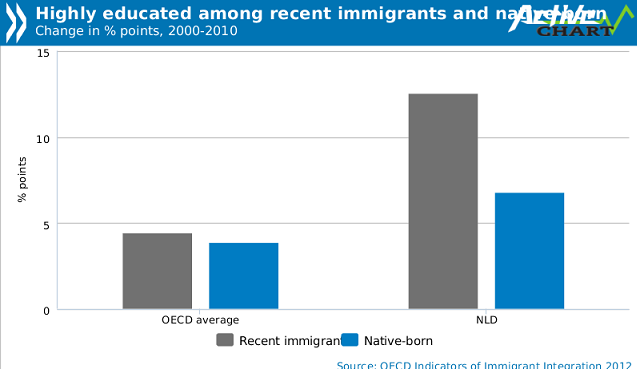
AMSTERDAM – In the last ten years the internationals could relatively easy find a job in OECD countries including finding job in the Netherlands. OECD countries have made much progress over the past decade in helping immigrants in employment process.Many countries have made attracting highly-skilled migrants a key target of their immigration policy. Australia, Canada, Denmark, Germany, the Netherlands and the United Kingdom have all seen sharp increases in the proportion of university-educated graduates among recent immigrants. The unemployment rate among migrants became thus much closer to that of natives.
According to the integration of migrants report by Organisation for Economic Cooperation and Development (OECD) published on Monday, this difference between migrant’s unemployment rate and that of Dutch natives is only 2.5 percent,
In the years 2000 and 2010 there was a difference of nearly 4 percent in the 34 OECD countries
This percentage increased in the period 2009-2010 to almost 65 percent working migrants with a difference of just over 2.5 percent of the native workforce.
Netherlands
In the Netherlands, migrants appear to have more difficulties finding a job than the average. In 2000, 61 percent of the work migrants had a job, in 2010 this number had risen to 65.5 percent.
The difference with the indigenous labor force in 2000 was 14.4 percent, by 2010 almost 12 percent.
Women
Migrant women have more difficulty finding a job, especially in the Netherlands Sweden and Belgium
Source: Organisation for Economic Cooperation and Development (OECD) and Nuzakelijk
